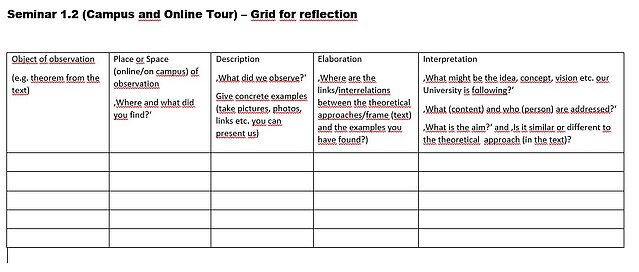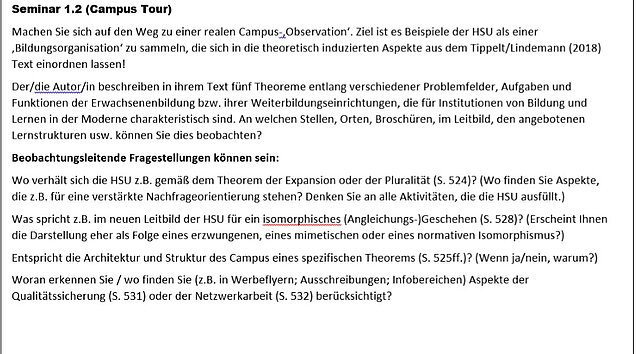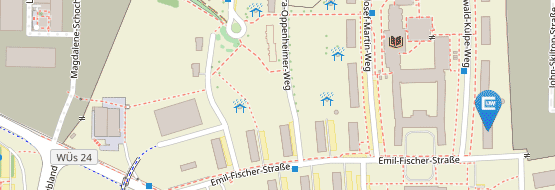Observation & Reflection
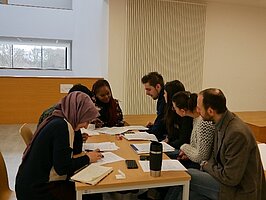
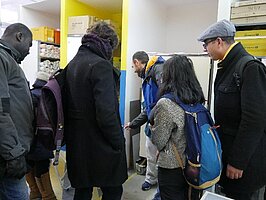
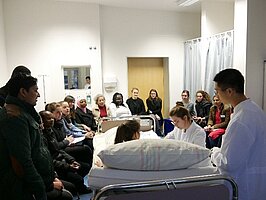
Aim of the strategy/method
- to gain theoretical and organisational knowledge and practice (by contextualising and searching for examples)
- to gain the capability to transfer knowledge through reflection (here: the context of a university as an AE organisation)
- to strengthen students’ capacity for creative and reflective thinking
Setting
Classroom, university building, campus, (institutional) website, internet, social media, etc.
Type and name of the course, curriculum, number of students
Introduction to institutionalization in AE (theoretical and organizational basics), bachelor’s level (2nd trimester; adult education as compulsory optional subject) = 17 students
Description of the method/strategy
The course is based on recommended literature, lecturing (self-directed and in plenary sessions), discussion, and seminar work. This is the background for fostering students’ activity using this strategy/method. After reading a text as an introduction to the theoretical frames and perspectives on AE organisations in Germany (Tippelt & Lindemann, 2015*), we discuss main aspects and important arguments in the plenary group. In order to deepen students’ understanding, to find concrete examples, and to reflect on them afterwards, one half of the group is sent on a ‘guided campus tour’ while the second half of the group completes a ‘guided online tour’. The same 5-8 questions are prepared for both groups (e.g. ‘Where in our university do you find examples of plurality/ diversification/ isomorphism, etc.?’ Possible answer: Gender diversity as a policy aspect can be found in the ‘gender equality’ concepts on the website of the ‘Gender Equality Commission’). Students should not only focus on the building itself but also on the structure of the architecture, the assembling, the design of information, general principles, semantics on the website, info booklets, and the like. They are free to collect their impressions, but they need to organise them in relation to our theoretical paradigms/theorems (taken from the literature we read in advance).The questions are open-ended, and only some of them are focused on the specific situation of the observed organisation (here: University/HSU and students not as civilians but as military staff). The instructor should be available throughout the 45 minutes of guided observation to answer any questions that may arise. After 45 minutes, the group meets again in the classroom to evaluate their (different) experiences and to discuss the results.
- Some details on how to support students in their creative and reflective thinking: Students benefit from specific questions that guide them in their observations. When working with master’s-level students, questions are sometimes prepared together with them (immediately after reading the text, for instance through methods such as cards collection, world café, or tandem groups). The text, which students read and discuss in advance, always serves as the theoretical basis (see references below).
- Sample question:
Where do you find specific examples of the theorem ‘heterogenity’ or ‘inclusion’ in our university’s statements, flyers, spaces, etc.? (view the mission statement, website, study-programmes, etc.). The question relates to the text (here: theorems of institutionalisation such as ‘pluralisation’, ‘heterogeneity’, ‘sustainability’, or ‘learner orientation’). The seminar worked on these theorems in advance and discussed their meaning.
How to manage the process
The instructors accompany students personally on their walk across campus multiple times. During the process, it is possible to grant more time if needed (this is a group decision; I ask students, but it depends on whether this is a 90-minute course or a block seminar).
Materials required
Readings (in the first session, as theoretical background and for students’ preparation) and 5-8 questions on a handout for the ‘guided-tours’ (see the grid below).
Origin and theoretical framework
The course is based on the idea of self-directed but guided learning; the focus is on students’ interests and their ‘view’ on theoretical categories. This is not an ‘evaluation’. Rather, the outcome is generated by collecting examples, and in the process of collecting artifacts, students are gradually made more aware of their surroundings, symbolic things, messages, and so on.
Risks and advantages
- Advantages: students are active; they receive orientation and support; they have the option to work on their ‘cases of observation’.
- Risks: It strongly depends on students’ motivation to act in an independent and self-directed manner; the evaluation requires their internal interest in reflection.
Possivle variations
- The method can be used only in the classroom and online. Much more material could be prepared in advance (e.g. university flyers or marketing booklets, etc.).
Other examples where you think it could be used
In AE practice and different organisations; it could also be sued to cover different topics.
Recommendation
- The teacher should be able to let the group ‘go’...
- How to evaluate students’ experience: The students present their outcomes and collection in a plenary session and we discuss them together (a written essay is another option).
Annexes (Examples form an university in Germany)
Grid for observing and preparing the presentation:
Guidelines and questions for their observation (related to the text; only in German):
Contact Persons
Sabine Schmidt- Lauff (schmidt-lauff@hsu-hh.de)
Jan Schiller (schiller@hsu-hh.de)


